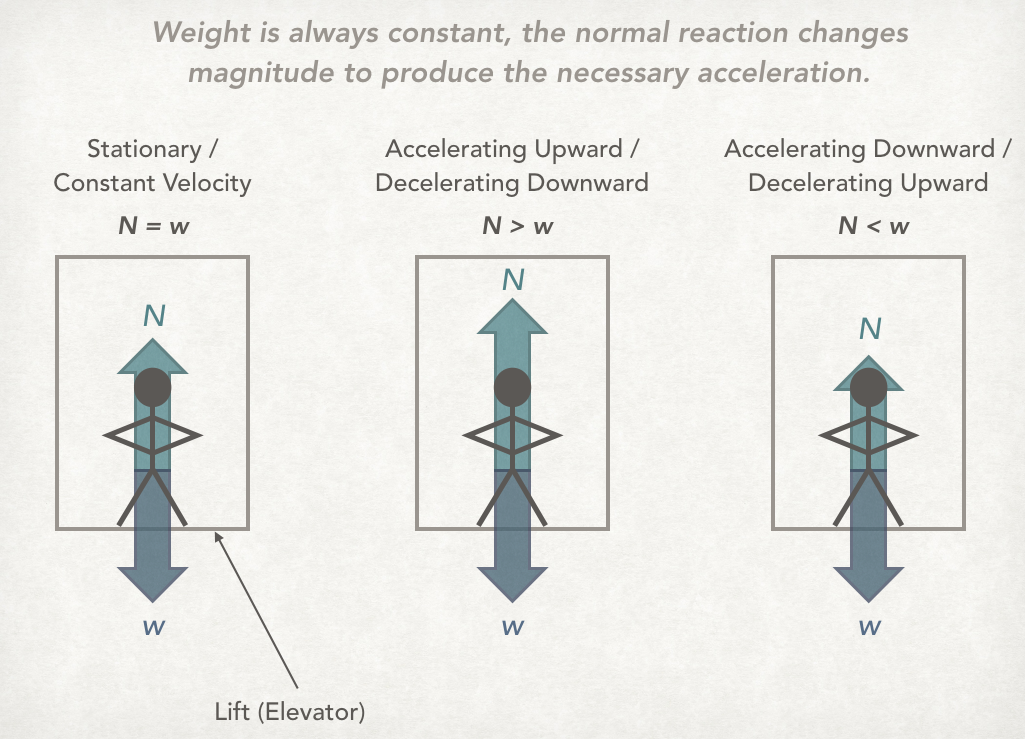Question #d5480
1 Answer
To accelerate downwards the weight must be larger than the normal reaction and that means that the normal reaction had to decrease. So the man perceives that his weight decreased .
Explanation:
Our perception of "weight" is really due the normal reaction force that acts upwards on us (or if we were hanging on something it would be the upward tension force etc). Our weight is always constant (as long as our mass remains constant). So in order to accelerate vertically the other force must change in magnitude. If the upward force gets larger we perceive that our weight increased and vice versa.
Let's now apply this to the situation in the elevator (or "lift" in UK English). The diagram below shows the possible scenarios with forces acting on the man in the lift. The forces are N for normal reaction and w for weight.

If the lift is stationary or at constant velocity then a zero resultant force is required, and that means that the forces must be of equal magnitude. If the lift is accelerating upward then the upward force must be larger than the downward, i.e. N is larger than w . Finally if the lift is accelerating downward then the downward force must be larger than upward, i.e. w is larger than N.
In this question the lift is accelerating downward. Therefore the weight must be larger than the normal reaction and that means that the normal reaction had to decrease. So the man perceives that his weight decreased.

